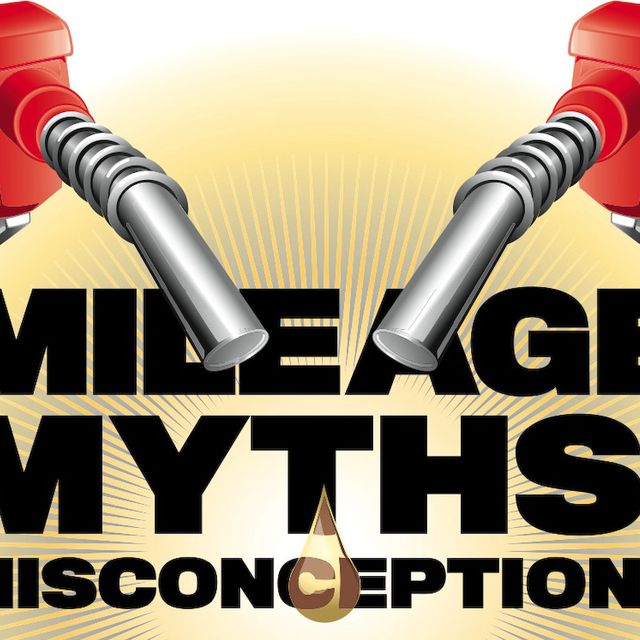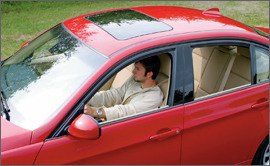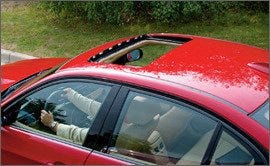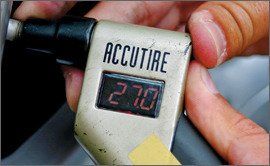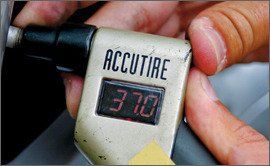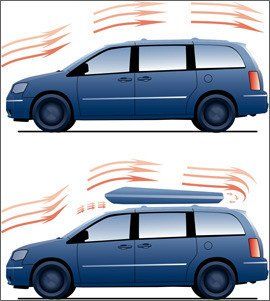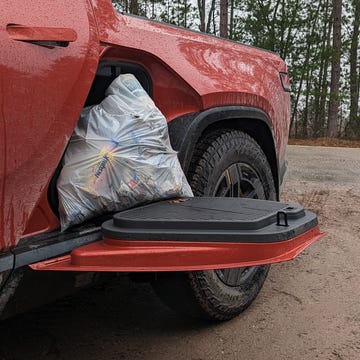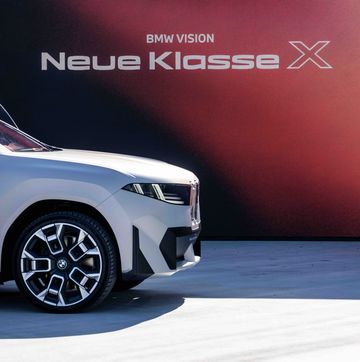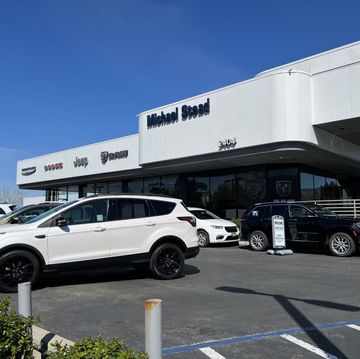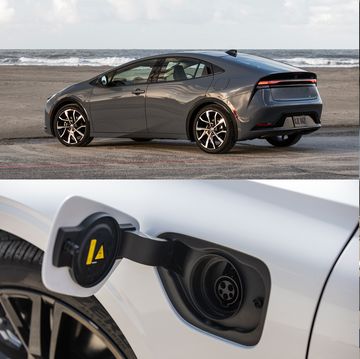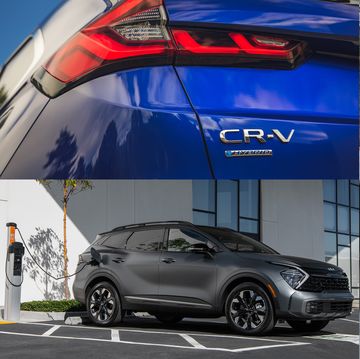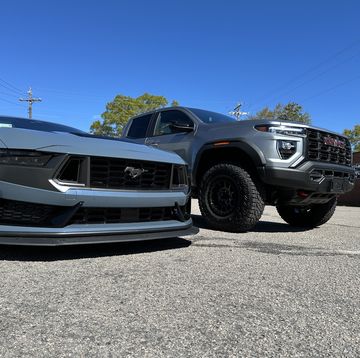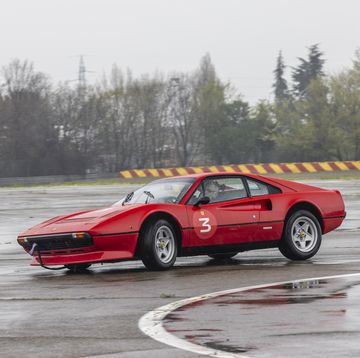Read more Gas Pains coverage: Destination: 35 MPG
Quickie quiz: True or false?
A. Lukewarm water freezes more quickly than cold water.
B. Penguins inhabit the North Pole.
C. Noodles were invented in Italy.
Fooled you on at least one, right? All of the statements are false even if they sound as though they could be true. There are a lot of popular conceptionsand misconceptionsabout fuel economy as well. Some of them involve common sense, such as keeping your tires properly inflated, whereas others are myths that people accept as the truth. Because fuel efficiency is the new cause célèbre in the automotive world, we decided to test a few fuel-saving and/or fuel-sapping situations to see just how much of a difference these tactics can make.
Our test scenario was to drive around a 2.5-mile oval at steady speeds (35, 55, and 75 mph) and measure fuel economy from the vehicles OBD II data port. We repeated the circuits under a variety of conditions (cargo added, windows down, etc.) and compared the results. Each test involved just one vehicle, so the numbers you see here arent exactly cast in stone. But our findings do give us a good idea about the degree of effect that each situation has on fuel economythe results may vary for different types of vehicles, but the general trends should be similar.
Read more Gas Pains coverage: Destination: 35 MPG
We wanted to determine which is a greater detriment to fuel economy: driving with the windows down or driving with the air conditioner on. The results of this test were surprising. We figured that the fuel economy of a modern car would suffer more from the extra aerodynamic drag that comes from driving with a vehicle’s windows open than by the additional load on the engine from running the A/C compressor.
With the sedan we tested, that wasn’t the case at all.If you buy into global warming being caused by humans and think that melting ice caps will be detrimental to the habitat of arctic wildlife, then insisting on frosty comfort in the cabin of your car will kill far more baby seals than does rolling down the windows.
The losses caused by running the A/C decrease at higher speeds because the engine produces more power as revs increase, reducing the burden on the engine of running accessories such as the compressor. Driving with an open sunroof and closed windows is also wasteful, although not as much as windows-open mode. And while driving with the windows down is more fuel efficient than running the A/C, you could lose an arm hanging it outside of the car like that.
Read more Gas Pains coverage: Destination: 35 MPG
We went in search of an expert opinion on this one. According to Paul Williamsen, the product education manager at Toyota, “All contemporary Toyota and Lexus vehicles (and every other car built since the 1990s that I’ve looked at) can detect the condition when engine revs are higher than idle with a fully closed throttle: Under these conditions, all current to the fuel injectors is stopped, and no fuel is injected.” That means if your foot is off the gas while the car’s in gear, you’re not using any fuel.
Tom Read, GM’s powertrain spokesman, agrees: “Shifting into neutral in an automatic will cancel fuel cutoff. Thus, it is better to remain in gear and let the drive wheels pull the engine airflow down to where fuel cutoff can be enabled or where fuel flow is minimized.”
Case closed, we’d say. Plus, shifting into neutral takes away the driver’s ability to accelerate instantly in a sudden emergency.
Read more Gas Pains coverage: Destination: 35 MPG
You might think that a cargo-ready car such as the Subaru Forester we tested wouldn’t notice a little extra weight in the back, but pretty much any vehicle burns more fuel with cargo on board. It’s seemingly common sense, but some people just won’t accept that when there’s more weight in the car, the engine has to do more work. So if you just haven’t gotten around to removing those two 50-pound bags of potting soil, do it now.
Read more Gas Pains coverage: Destination: 35 MPG
Chances are you already know this, and maybe you even think it’s an important component of a national energy policy. Underinflated tires increase rolling resistance, which makes the engine work harder to propel the vehicle. Plus, the extra resistance generates more heat, which can cause the tires to degrade more rapidly. And while a manufacturer’s recommended inflation pressure is a good thing, adding more air improves fuel economy, but not to the degree that you lose mpg going the other way. Overinflating tires makes them roll more easily, but it will stiffen the ride, decrease handling and braking performance, and could result in uneven tire wear.
If you’re going to add more pressure than recommended to your tires, do it carefully. Kurt Berger, consumer products manager at Bridgestone/Firestone, says “If one wants to experiment with slightly higher than recommended pressures, we would advise doing it incrementally and within a limited range, carefully Ânoting any negative performance characteristics that may occur as a result. In any case, never exceed the maximum inflation pressure listed on the sidewall of the tire.”
Read more Gas Pains coverage: Destination: 35 MPG
Any protuberance on a vehicle’s roof, be it a cargo carrier, a kayak, a bicycle, a mattress, or large road kill, will add to the vehicle’s wind resistance. What’s surprising is just how much difference the crossbars between the roof rails make, even with a wind deflector. So if you’re not using that roof rack on a long trip, get it off.
Read more Gas Pains coverage: Destination: 35 MPG
Turning off the engine in a conventional, nonhybrid vehicle will save gas, but it’s only worth it if you’ll be stopped for a while. We went back to the experts for this. GM’s Read says, “If used repeatedly, the engine system must be designed for this. Practically, we would not recommend doing this at every stoplight, however, because the savings are small unless you will be sitting for more than one or two minutes, and you put extra wear and tear on your starting system if you [switch on and off] too often. Waiting for a train or in a drive-through are great examples where it makes sense to shut off your engine. Hybrid systems in the new Malibu and Tahoe hybrids shut off their engines automatically and are designed to handle the extra stop-start cycles.”
According to Toyota’s Williamsen, “Cranking a hot engine to start is among the more stressful things we ask it to do because during cranking, the oil pump generally cannot produce much pressure.” He says there’s an extra safety risk, depending on where and why you’re stopped, to turning off the engine: “There will be no way to dehumidify interior air to defog the windshield for visibility, and the headlight and marker lights may go out if the driver has been relying on new ‘smart’ daytime running lights rather than having manually turned on an old-fashioned ‘dumb’ light switch. In addition, the driver can’t immediately command the car to roll forward in the case of some other driver’s error. For these reasons, we do not recommend this, except in cars that have been specifically designed to overcome these issues, such as Toyota or Lexus hybrids, for example.”
So there you go. And in case our experts have you confused, other manufacturers make hybrid vehicles as well that safely shut off the engine at a stop.
Read more Gas Pains coverage: Destination: 35 MPG
At lower speeds, the added wind resistance from the turbulence created by an open roof isn’t that great, so there’s not much penalty for insisting on the rolling tanning booth. Wind resistance increases by the square of increasing speed, though, so it gets much worse the faster you go. Our test car was a BMW M Roadster, which has just two seats and a smaller opening for the cabin than found on larger convertibles, so the loss in fuel economy could be worse for four-seat droptops. When the top is down, you’ll get slightly better fuel economy with the windows up, but not enough to make up for you looking like a total doofus.
